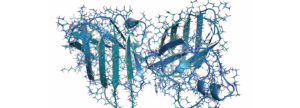Important regulatory updates on joint dossiers for food enzymes
Posted 24 March, 2020
Last week, EFSA announced important updates to the way that joint food enzyme dossiers will be evaluated moving forward.
Up until recently, it was possible to compile a joint dossier for several food enzymes extracted from plant and animal tissues and for enzymes produced by fermentation. There was a possibility to create a working group for the submission of a joint dossier through the Association of Manufacturers & Formulators of Enzyme Products (AMFEP), in case there was enough interest from food enzyme producers. AMFEP functioned as an intermediary agent between the applicants of the joint dossier and EFSA. Several enzymes originating from the same organism, or enzymes with the same catalytic activities could be covered by one joint dossier. To date, 16 joint dossiers on enzymes obtained from microorganisms had been submitted, but numerous challenges, complexities and data gaps were identified in the information/data recieved. Due to several applicants being involved in the dossier, this has led to issues with confidentiality related to some of the data gaps in the joint dossiers. Specific data that was often missing, included data on identification and characterisation of the production strain used to produce the enzyme and data on the declared activities and intended uses of all enzymes in the dossier.

Because of the complexity and challenges arising with joint dossiers, it has been decided that specific joint dossiers will have to be ungrouped, e.g. dossiers on enzymes produced by several production strains would have to ungrouped by production strain and dossiers on enzymes with the same catalytic activities, but produced by different manufacturing processes would have to be ungrouped by manufacturing process. In this way, each data package will have its own opinion, as applicable for “regular dossiers” and issues with confidentiality should therefore not arise. In specific cases, a dossier can remain joint, e.g. if only one of the interested parties is the applicant and if all enzymes are obtained from the same production strain, are produced by the same manufacturing process and have the same declared activities. Enzyme applicants will have to send a full data package directly to the FIP Unit (Food Enzyme Team) in EFSA. EFSA will deal with the contact person directly and AMFEP will not be functioning as an intermediary agent anymore. Resubmissions need to be done within a timeframe that is considered acceptable and feasible by EFSA, the European Commission and the Industry.
Have you submitted a joint dossier on food enzymes and are you unsure how proceed? Pen & Tec can help and advise you in which steps you need to take for your joint dossier on food enzymes.
Useful links:
By Hannes Malfroy, Regulatory Affairs Associate
Pen & Tec Consulting
